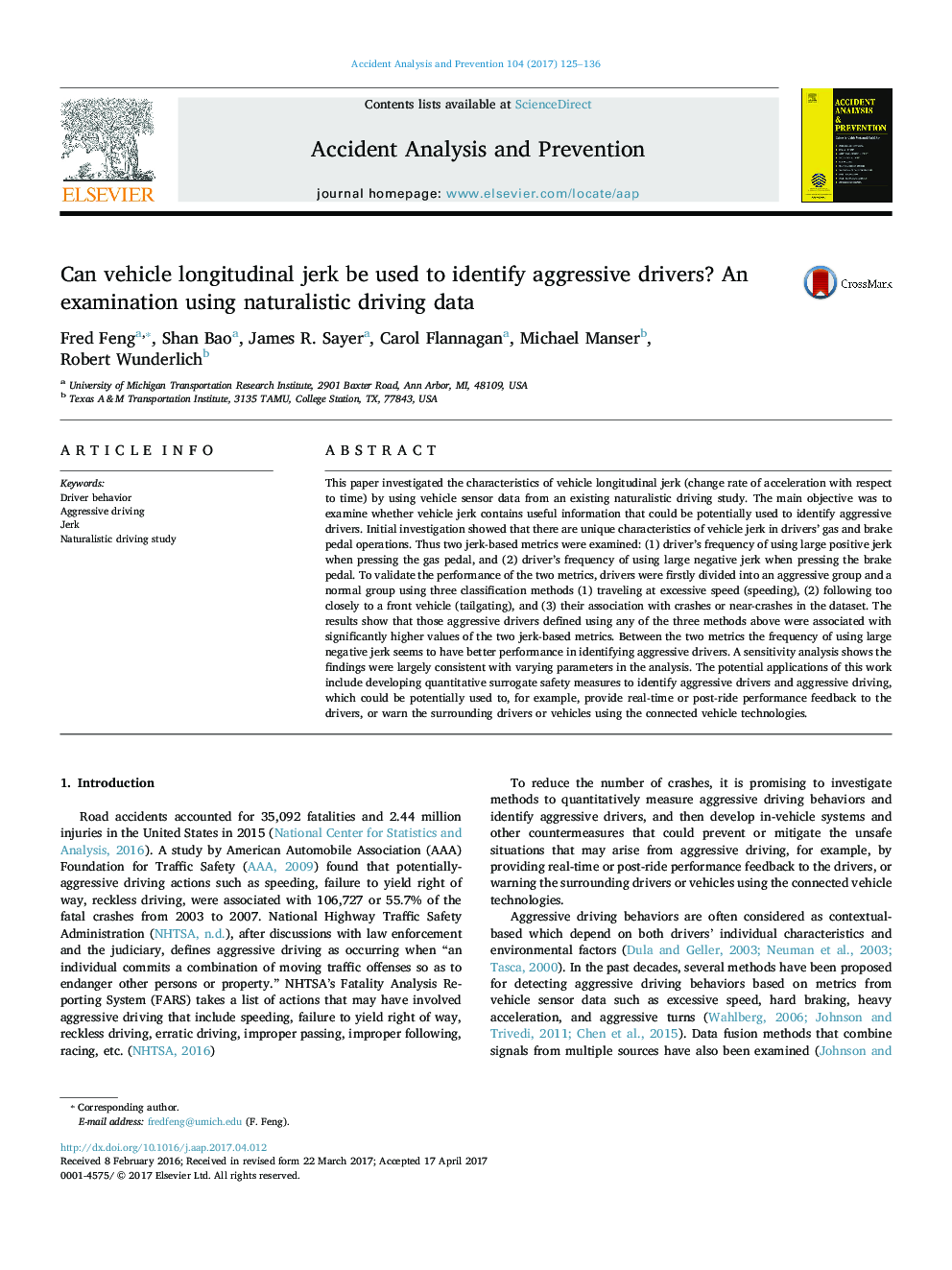| Article ID | Journal | Published Year | Pages | File Type |
|---|---|---|---|---|
| 4978628 | Accident Analysis & Prevention | 2017 | 12 Pages |
Abstract
This paper investigated the characteristics of vehicle longitudinal jerk (change rate of acceleration with respect to time) by using vehicle sensor data from an existing naturalistic driving study. The main objective was to examine whether vehicle jerk contains useful information that could be potentially used to identify aggressive drivers. Initial investigation showed that there are unique characteristics of vehicle jerk in drivers' gas and brake pedal operations. Thus two jerk-based metrics were examined: (1) driver's frequency of using large positive jerk when pressing the gas pedal, and (2) driver's frequency of using large negative jerk when pressing the brake pedal. To validate the performance of the two metrics, drivers were firstly divided into an aggressive group and a normal group using three classification methods (1) traveling at excessive speed (speeding), (2) following too closely to a front vehicle (tailgating), and (3) their association with crashes or near-crashes in the dataset. The results show that those aggressive drivers defined using any of the three methods above were associated with significantly higher values of the two jerk-based metrics. Between the two metrics the frequency of using large negative jerk seems to have better performance in identifying aggressive drivers. A sensitivity analysis shows the findings were largely consistent with varying parameters in the analysis. The potential applications of this work include developing quantitative surrogate safety measures to identify aggressive drivers and aggressive driving, which could be potentially used to, for example, provide real-time or post-ride performance feedback to the drivers, or warn the surrounding drivers or vehicles using the connected vehicle technologies.
Related Topics
Physical Sciences and Engineering
Chemical Engineering
Chemical Health and Safety
Authors
Fred Feng, Shan Bao, James R. Sayer, Carol Flannagan, Michael Manser, Robert Wunderlich,
